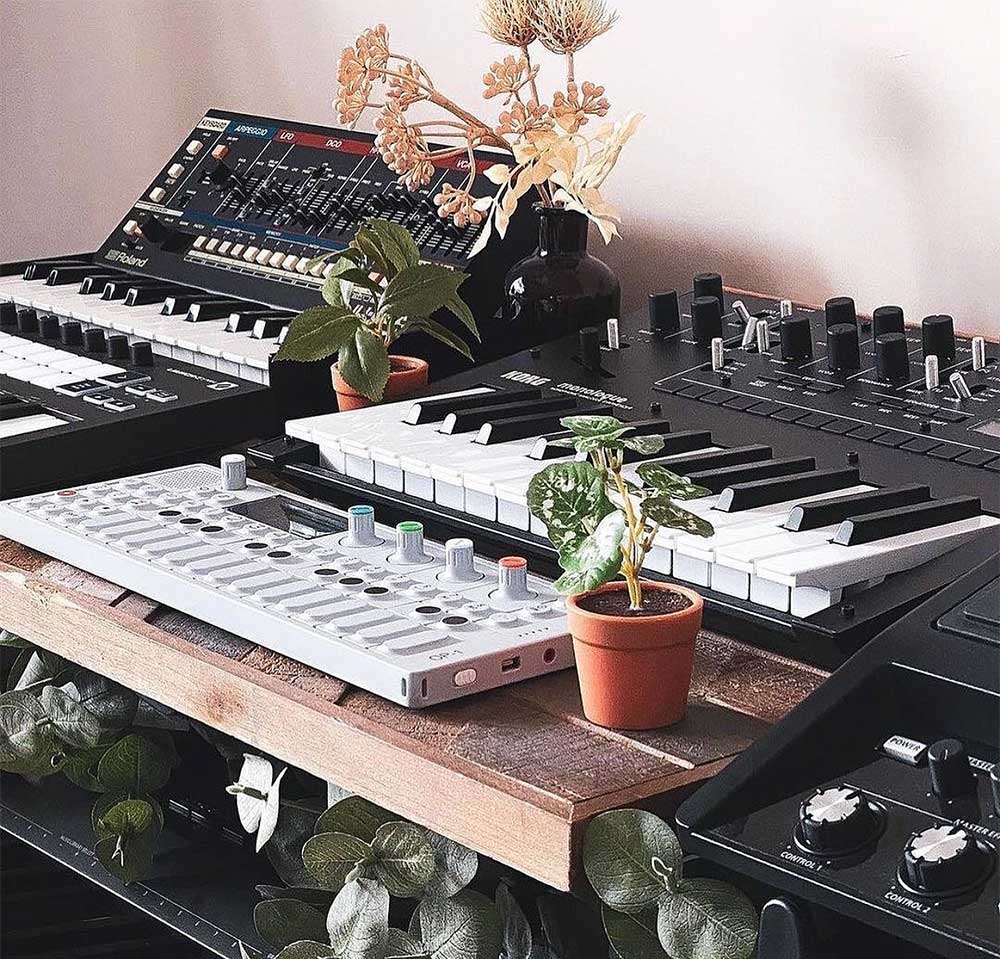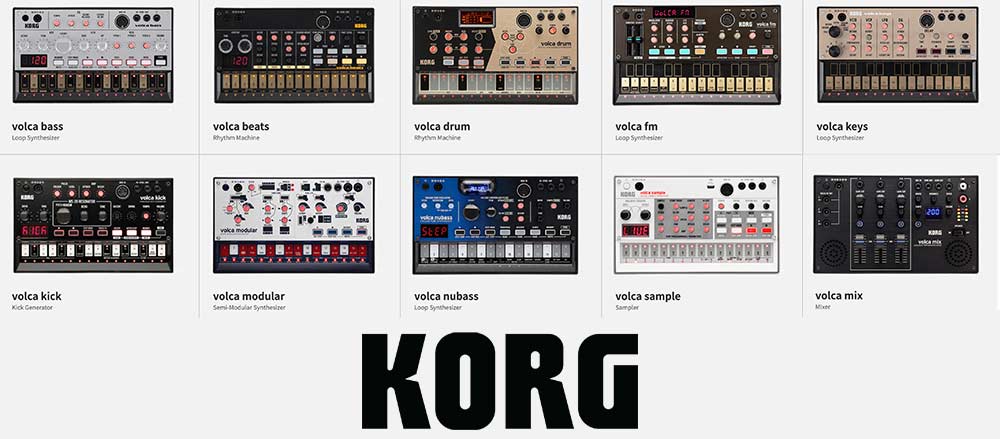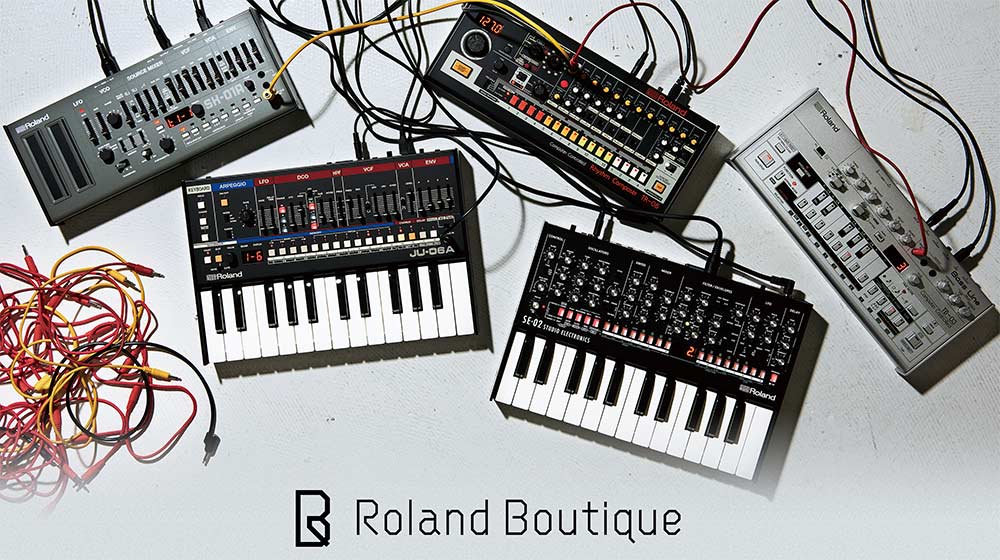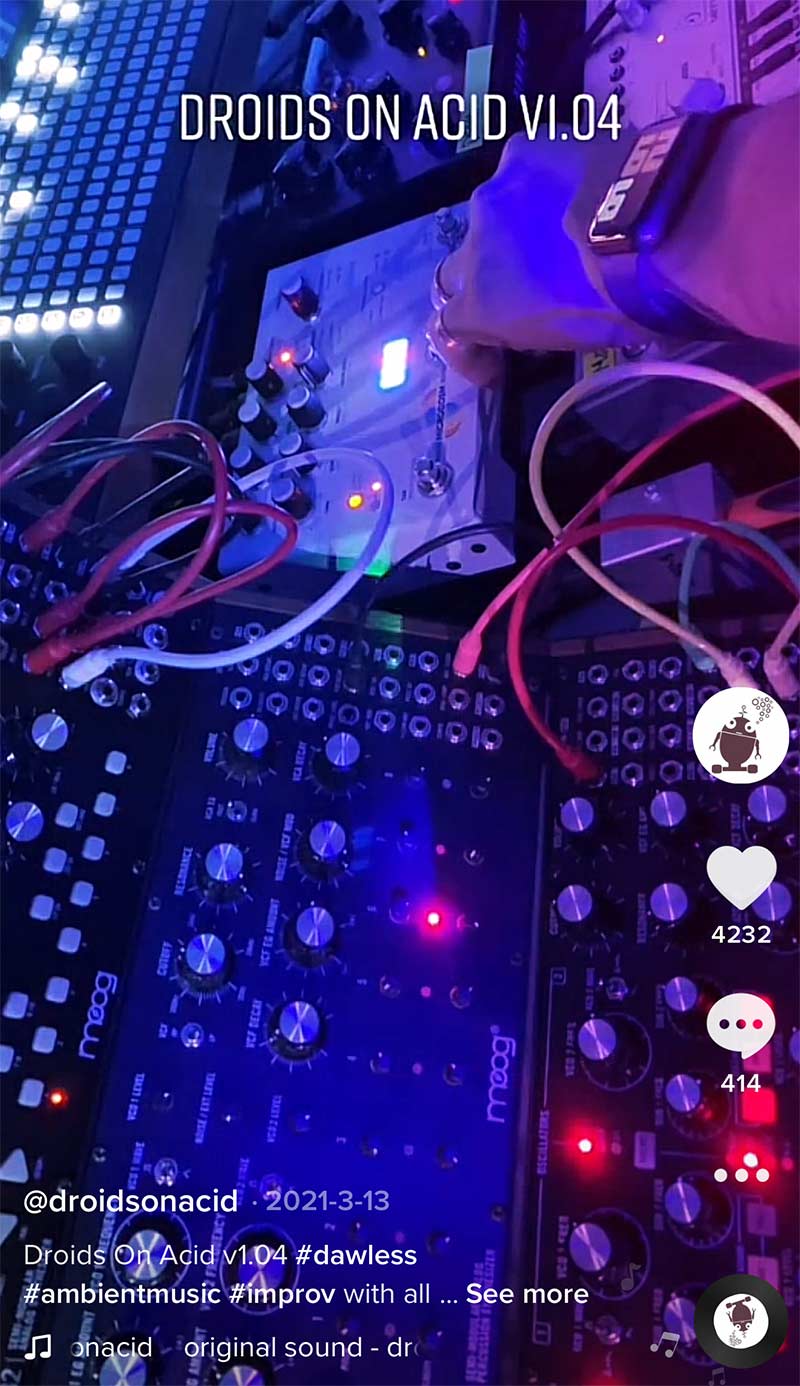While the concept of the Micro Studio may not be entirely new, the surge of new compact-sized drum machines, synthesizers and sound modules by both well-established and boutique manufacturers, as well as other timely factors, has provided the perfect environment for this flourishing trend.

First and foremost, both Korg’s Volca and Roland’s Boutique series provided electronic musicians with the means to establish their own home studios without the need for expansive real estate. A corner of a bedroom, a desk in the living room, or even space on the dining room table was all that was required to set up these devices and get to work. Korg, who was first out of the gate with the Volca series, established a very low barrier to entry with inexpensive modules that punched above their weight. Unlike the Electribe Series with their all-in-one production approach, each Volca was dedicated to one task, so users could select exactly what sounds appealed to them to put together their own micro studio. Whether it was simply a FM Synth, a dedicated Bass unit and/or a simple drum machine, Korg’s Volca ecosystem allowed the musician to customize their setup and link everything together with Korg’s proprietary Sync technology or MIDI, using an external sequencer like Korg’s own SQ-1. Even better, you could create a truly fun studio for less than $500.

For a limited time only! Up to 80% off all Waves Bundles. PLUS click the banner above or the Go button for an additional 10%! This is Waves best deal yet! Get yours today before this special ends! GO!
The Rise Of The Micro Studio
Roland, who followed a similar form factor, took a different approach to their micro studio modules. They finally relented and gave the people — almost — what they wanted, reissues of the famed 1980’s synthesizers and drum machines that fueled electronic music production and turned it into a global phenomenon. Instead of employing modern analog engineering, they turned to their own modeling technology, Analog Circuit Behavior (ACB) and shoehorned many of their fabled products into the Boutique form-factor. To be honest, when these first debuted, I was highly disappointed. Their TB-03 (TB-303) was “just okay” and the JU-08 (Super Jupiter) was a valiant effort, but missed. Worse, the Roland Boutiques weren’t entry-level priced. The JU-08 was $499 and the TB-03 was $399. Roland probably justified this by looking at used prices for the originals, but it was a put-off and it turned off potential suitors. Roland’s approach has gotten better. The JU-06a (Juno 60/106 combo) is quite good and the SH-01a (SH-101) is also commendable. That said, I think the SE-02 – the Roland x Studio Electronics mashup – could be the sleeper of the lot. But again, for the $399 you’ll pay for a SH-01a, you can get 2.5 Volca’s. That may not mean much to an electronic music producer with a larger rig, but to someone creating their own micro studio, it’s significant.

The easiest way for electronic musicians to get their music onto Spotify, Apple Music, iTunes, Amazon Music, Tidal, Instagram, Facebook, TikTok, Pandora, Twitch & much more! Click the banner above or the Go Button to save 7% off of your signup! GO!
However, it wasn’t only Korg and Roland who were releasing backpack sized gear. 1010Music not only creates impossibly small sized products, but packs them with original features. Teenage Engineering with their whimsical, but highly effective OP-1, as well as their pocket modules, is certainly a player. Arturia’s MicroFreak, which was an unexpected hit for the French concern, had a big impact, especially for the more experimental musician. Moog even got into the mix with the Mother32, Subharmonicon and DFAM, and packaged it all together with a multitiered stand to pull off the Soyuz control panel aesthetic. Herbs and Stones pulled off the Liquid Foam and IK Multimedia debuted their own mini modules, the Uno Drum and Uno Synth. And just as the pandemic hit, there were a ton of options available for users with a lot of free time on their hands.
The global Covid pandemic really pushed the micro studio over the edge. Stuck at home, musicians new, old and just curious decided this was the quintessential time to make music. Suddenly, used kit on vehicles like Craig’s List evaporated and when a synth or drum machine was actually available for sale, it was going for the same price or just a few dollars less than new. New gear, what was available just before the pandemic, instantly sold off and with supply lines and deliveries delayed or put on indefinite hold, anything that did make it to market sold immediately. Some manufacturers, such as Moog, who had ample supplies were able to ramp up production to meet the demand and found themselves with a 30% gain for the year. If you thought trying to get a decent N95 mask was difficult? Try finding an OP-1.
Explosion Of TikTok
Talk about timing. Just as musicians were sequestered at home with their mini modules, TikTok accelerated at warp speed to become the video social media platform of choice. Unlike the overbaked and bloatware-filled Instagram, where it was almost impossible to gain any sort of traction attacking a new audience unless you were in a bikini, TikTok kept things simple and nailed their algorithm so much so that there were times I thought it was reading my mind. When I first joined, I was inundated with users just like me. Men, women, boys and girls all making electronic music at home in their own micro studios. I could see each one of their rigs and hear what they were able to create. I was inspired by so many musicians and I could interact with them to get their impressions on each one of their mini modules, how they were able to dial in a particular sound and even share some time-saving tips I’ve acquired over the years.
Instead of the vile, sarcastic and hostile comments you read on Instagram, the feedback on TikTok was positive, cheerful and encouraging. TikTok’s preference is original, gritty content, as opposed to polished and prepared videos – think handheld documentary as opposed to Hollywood CGI blockbuster. Thus, more genuine videos are being produced, which is perfect for micro studio content. And as a bonus, you could gain a nice following without having to endure dozens of plastic surgery procedures or learning a dopey dance that will only lead to a misstep and ACL reconstruction.
Limitations Lead To Creativity
As the old saying goes “Limitations foster creativity” – and there is something completely refreshing about going from a full studio, with a limitless Digital Audio Workstation (DAW) at the center, to a DAWless micro studio with just a handful of sound sources. First off, it’s just plain fun. Instead of mousing around and only pounding on some MPC-style pads or playing a MIDI controller keyboard once in a while, a micro studio demands a hands on approach, turning knobs, pushing buttons, and more. Second, with only a few sound sources, you rarely if ever get into analysis paralysis, scrolling those pages and pages of presets as you audition sound after sound, hoping to get inspired. Talk about uncreative.
A micro studio almost forces you to work quickly and efficiently. As soon as you get something “that works” – you move on to the next module. Once you have a groove, you can then go back and tweak your sounds until you dial it to your satisfaction. At this point, you either “print it” by recording the entire groove and/or the individual stems, or bust out your phone and record a video for your community on social media. Either way, almost every time you step into your studio you have something to show for it. Rather than noodling around for hours, auditioning presets, and/or programming automation, and then not having much in the way of a completed track, beat or groove.

The other benefit to working in this manner is that you put uploading to social media to work for you, instead of you working for a social media platform. If you haven’t realized it yet, individual content creators are what gives each social media platform its mojo, and are essentially servants who are paid in likes and follows. Worse, “influencers” become a slave to the platform, having to create content multiple times per day, every single day for fear of losing their audience. Every “influencer” I’ve spoken with says that the whole thing becomes a chore and is no longer fun. So what’s the point?
In contrast, if you say, every time I sit down in my studio, I need to create at least 15 seconds to a minute of quality music, interesting things happen. This simple mind trick forces you to focus and create something of decent quality every single time you enter your studio. No more just messing around. No more creating a new sound for two hours. Concentrated efficiency. If you’ve ever read an interview with a successful Nashville songwriter or beat maker from New York City or a producer from London, they will reveal the same thing. They propel themselves to write a predetermined amount of songs/beats every time they have a writing session. Thus, your micro studio can be your “writing room” and you can use social media for your benefit.
The best thing about the rise of the micro studio is that the trend “has legs.” Korg and Roland, as well as the smaller manufacturers, keep debuting new products and the trend has also spilled over to different product categories, including my personal favorite, guitar pedals. Suddenly guitar pedals have stereo inputs and are just as effective on synths as they are on guitars. Hologram’s Microcosm, is certainly a standout in this arena, but Chase Bliss and Eventide are bringing the heat with several amazing offerings. Mentioned earlier, we love what 1010Music is doing with their astonishingly small products. We just reviewed the Fireball and Lemondrop mini synths from their new nanoseries and were quite impressed with what they were able to accomplish. Which is why, there has never been a better time to jump into developing your own micro studio and seeing how it can inspire you in new and rewarding ways.











